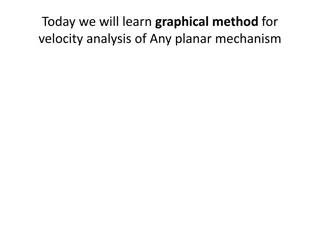The Fascinating World of Rockets: Energy, Escape Velocity, and More
Explore the intriguing realm of rockets, from the energy required for launch to the concept of escape velocity. Delve into the calculations behind rocket mass and the incredible feats achieved in space exploration. Unveil the formulas and historical context that shape our understanding of space travel.
Download Presentation

Please find below an Image/Link to download the presentation.
The content on the website is provided AS IS for your information and personal use only. It may not be sold, licensed, or shared on other websites without obtaining consent from the author.If you encounter any issues during the download, it is possible that the publisher has removed the file from their server.
You are allowed to download the files provided on this website for personal or commercial use, subject to the condition that they are used lawfully. All files are the property of their respective owners.
The content on the website is provided AS IS for your information and personal use only. It may not be sold, licensed, or shared on other websites without obtaining consent from the author.
E N D
Presentation Transcript
Flying high! Calculating the amount of energy needed to launch a rocket
Stay safe Whether you are a scientist researching a new medicine or an engineer solving climate change, safety always comes first. An adult must always be around and supervising when doing this activity. You are responsible for: ensuring that any equipment used for this activity is in good working condition behaving sensibly and following any safety instructions so as not to hurt or injure yourself or others Please note that in the absence of any negligence or other breach of duty by us, this activity is carried out at your own risk. It is important to take extra care at the stages marked with this symbol:
Context blast off! Rockets carry satellites, people and supplies into space It takes a lot of energy to get a rocket from the ground into space The amount of energy increases as the weight of the rocket gets heavier
What is escape velocity? Scientists have known for over 200 years that anything that goes fast enough straight up can escape the earth and fly into space. This rate of movement is called the escape velocity . They knew this because the maths said so. Sir Isaac Newton proved it but some still didn t believe it. It wasn t until the launch of the first satellite into space in 1957 that it was really used for real. Sir Isaac Newton. 1643-1727 (Great Hair)
Escape velocity At the Earth s surface, if atmospheric resistance is disregarded, escape velocity = 11.2 km/s That is equivalent to 40,320 km/h or 25,053 miles per hour! For comparison, the speed of sound is just 1225 km/h so escape velocity is 32.9 x the speed of sound! At the surface of the moon the escape velocity is approximately 2.4 km/s
Energy formula To calculate the amount of energy needed for something to reach escape velocity we can use the formula: Mass Energy Velocity E is for energy, measured in joules (J) m stands for mass, measured kilograms (kg) v stands for velocity, measured in metres per second (m/s)
Rocket mass The biggest rocket ever was the Saturn V It launched the NASA Apollo missions into space It had a mass of 2.8 million kilograms = 2,800,000 kg Most of that was fuel to launch the rocket itself! The newer Space X rockets have a mass of 1,420,788 kg
Calculation for Space X rocket Escape velocity is 11.2 km/s, which is 11200 m/s The Space X Falcon has a mass of 1,420,788 kg So, E = mv2 = (1,420,788 x 112002) E = 89,111,823,360,000 J, or 8.9 x 1013 J That s a very big number indeed! Perform the same calculation for the Saturn V rocket























